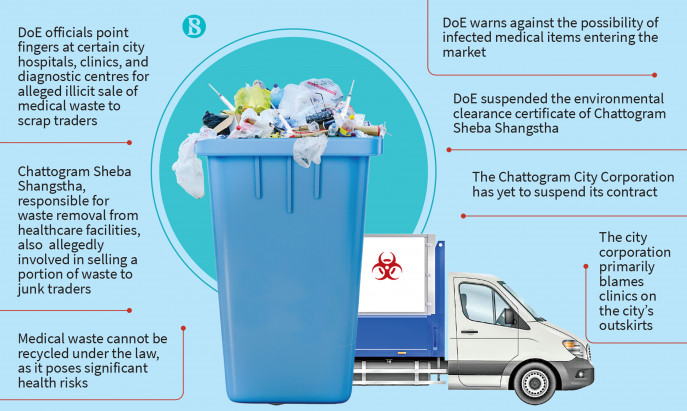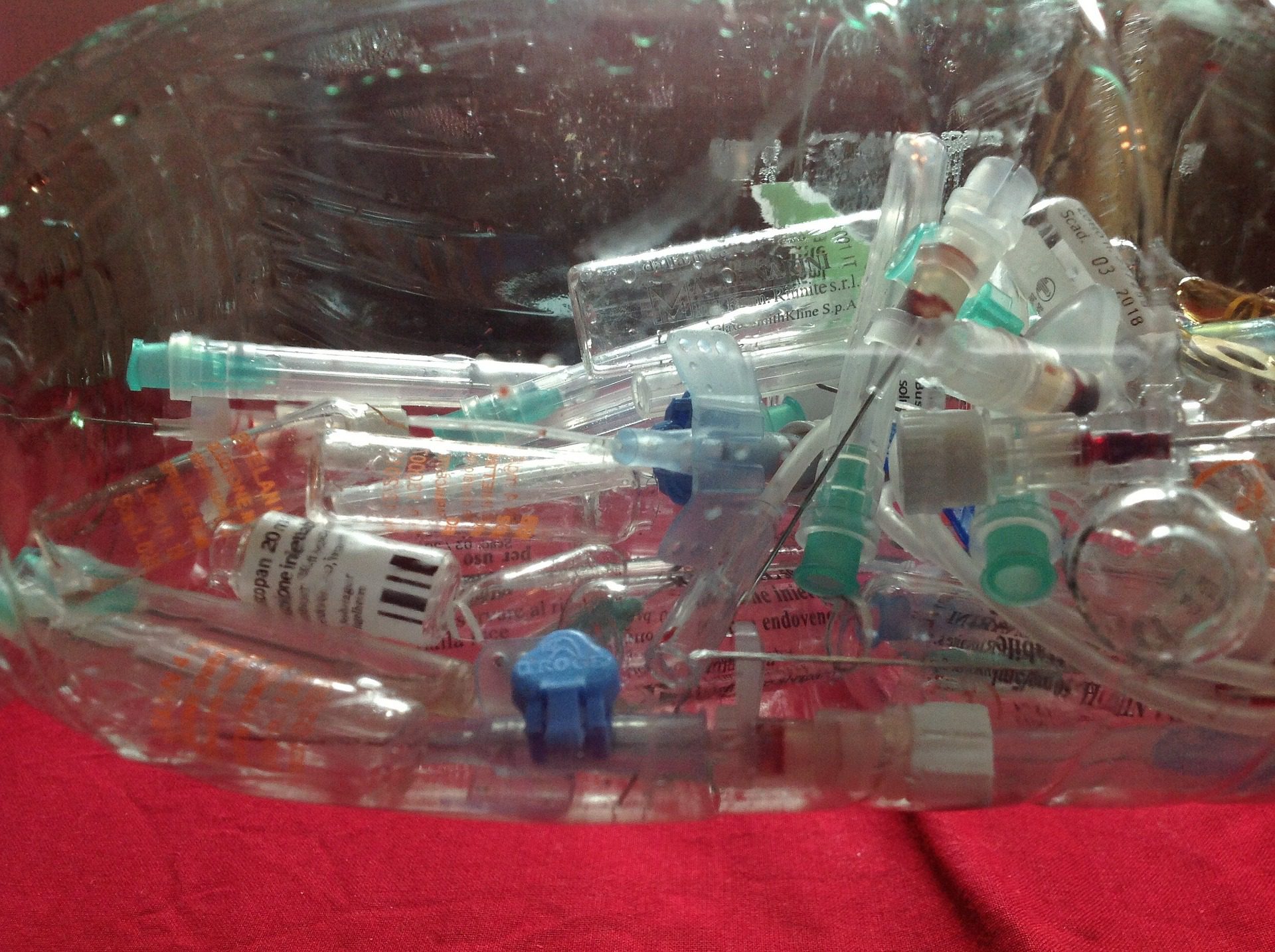Protecting Wellness: Revealing the Essence of Expert Medical Waste Removal
Stay Ahead of Laws: Specialist Advice on Medical Waste Disposal
In a world where the medical care industry is continuously progressing, it is vital for clinical facilities to remain in advance of policies when it concerns the appropriate disposal of clinical waste. With rigid standards and constant regulatory changes, it can be challenging to navigate the intricacies of this process. Nevertheless, with professional advice, facilities can make sure conformity and minimize risks related to improper waste disposal. From recognizing the various groups of clinical waste to executing the ideal collection and segregation methods, this discussion will provide actionable suggestions and beneficial understandings to aid centers stay ahead of regulations in the ever-changing landscape of medical garbage disposal.
Understanding Medical Waste Categories
Understanding medical waste classifications is vital for proper disposal and management in healthcare centers. Medical waste describes any type of waste created by health care tasks that may position a danger to public health or the atmosphere. It is essential to classify medical waste properly to guarantee its safe handling, therapy, transportation, and disposal.
There are a number of groups of medical waste that health care centers require to be aware of. One of the most usual categories include transmittable waste, pathological waste, sharps waste, pharmaceutical waste, and chemical waste. Each category has particular standards and regulations for its proper management and disposal.
Transmittable waste consists of materials contaminated with blood or other physical fluids, such as handwear covers, dress, and laboratory cultures. Pathological waste refers to human tissues, organs, or body components that call for unique handling and disposal. Sharps waste includes utilized needles, syringes, and other sharp objects that can trigger injury and send infections. Pharmaceutical waste makes up ended, unused, or infected drugs that need careful handling and disposal. Chemical waste consists of solvents, anti-bacterials, and various other chemical materials made use of in medical care centers.
Staying Up-To-Date With Regulatory Changes
Remaining present with regulative modifications is vital for medical care centers to guarantee compliance and proper management of medical garbage disposal. medical waste removal near me. With policies continuously developing, it is vital for health care centers to remain updated to prevent penalties, penalties, and prospective damage to the atmosphere and public health
To remain ahead of regulatory adjustments, medical care centers ought to develop a system for tracking and tracking updates. This can be done by subscribing to regulatory e-newsletters, going to workshops and meetings, and actively getting involved in sector associations. Additionally, centers should mark a personnel or group in charge of remaining informed and sharing information to appropriate stakeholders.
Routine communication with regulative agencies is also crucial. Medical care centers ought to develop connections with local, state, and government agencies to ensure they know any type of adjustments in guidelines that may affect their waste monitoring methods. This can be done via regular conferences, engagement in public comment periods, and aggressive engagement with governing agencies.
Moreover, healthcare centers need to think about partnering with waste management firms that concentrate on medical garbage disposal (medical waste disposal services with WasteX). These firms are often skilled in the most recent regulations and can offer advice and support to guarantee conformity
Applying Correct Collection and Segregation Techniques
To successfully take care of clinical garbage disposal, healthcare facilities must establish appropriate collection and segregation techniques based on regulative guidelines. Implementing these techniques makes sure the risk-free handling and disposal of possibly hazardous materials, safeguards the environment, and reduces the danger of infections and injuries to health care workers and the basic public.
Appropriate collection and segregation techniques involve using designated containers and identifying systems. Health care facilities should provide plainly classified containers for various kinds of clinical waste, such as sharps, contagious waste, pharmaceutical waste, and non-hazardous waste. These containers ought to medical waste disposal services with WasteX be color-coded and clearly significant to stay clear of confusion and advertise very easy identification.
Furthermore, healthcare facilities need to educate their team on the right procedures for collecting and setting apart clinical waste. This includes educating them on the various kinds of waste, the find out suitable containers to make use of, and the value of complying with guidelines and guidelines. Normal training sessions and correspondence course ought to be performed to make sure that staff participants continue to be up-to-date on ideal methods.
In addition, medical care facilities should develop a system for regular collection and disposal of clinical waste. This may entail partnering with accredited waste management companies that specialize in clinical waste disposal. These firms will ensure that the collected waste is transferred and dealt with in conformity with regulatory needs.
Selecting the Right Disposal Techniques

Incineration is among one of the most usual and reliable methods for taking care of certain kinds of medical waste, such as pathological waste and sharps. It includes the controlled combustion of waste at heats, decreasing it to ash. However, incineration can launch harmful pollutants into the air and add to air contamination.

Various other disposal techniques consist of chemical treatment, microwave treatment, and landfilling. Chemical therapy entails using chemicals to reduce the effects of the waste and disinfect. Microwave therapy utilizes microwave energy to warm and disinfect the waste. Landfilling entails burying the waste in a marked land fill location (medical waste disposal services with WasteX). Landfilling needs here to be the last resort due to the prospective danger of contamination to dirt and groundwater.
Making Sure Conformity Via Documents and Training
After carefully thinking about the proper disposal approaches for clinical waste, medical care centers need to make certain compliance with policies and reduce environmental impact by executing effective documentation and training treatments. This action is vital in keeping a secure and lasting environment for both health care employees and the basic public.

Training is equally vital in making sure compliance with laws. Health care employees that take care of medical waste must obtain appropriate training on waste segregation, handling, and disposal procedures. This training ought to cover subjects such as the correct use personal protective devices, recognition of various kinds of waste, and the appropriate disposal approaches for every waste group. By providing detailed training, medical care centers can encourage their staff to make informed choices and minimize the risk of incorrect waste disposal.
Verdict
To conclude, remaining in advance of guidelines in medical waste disposal is vital for medical care centers. medical waste removal services. Recognizing the various classifications of medical waste, remaining upgraded with governing modifications, carrying out appropriate collection and segregation approaches, picking the proper disposal techniques, and making sure compliance through documents and training are all crucial actions. By complying with these guidelines, medical care companies can successfully get rid of and handle of medical waste in a risk-free and accountable manner
From comprehending the different categories of medical waste to executing the ideal collection and segregation approaches, this discussion will certainly supply valuable understandings and actionable pointers to assist facilities remain ahead of laws in the ever-changing landscape of medical waste disposal. - medical waste disposal services with WasteX
The most typical groups consist of contagious waste, pathological waste, sharps waste, pharmaceutical waste, and chemical waste. Medical care centers should offer plainly classified containers for various types of clinical waste, such as sharps, transmittable waste, pharmaceutical waste, and non-hazardous waste. Medical care facilities should establish a detailed system to tape and track all facets of clinical waste disposal, including types of waste generated, quantities, and disposal methods used. Health care employees that manage clinical waste needs to obtain ideal training on waste partition, handling, and disposal treatments.